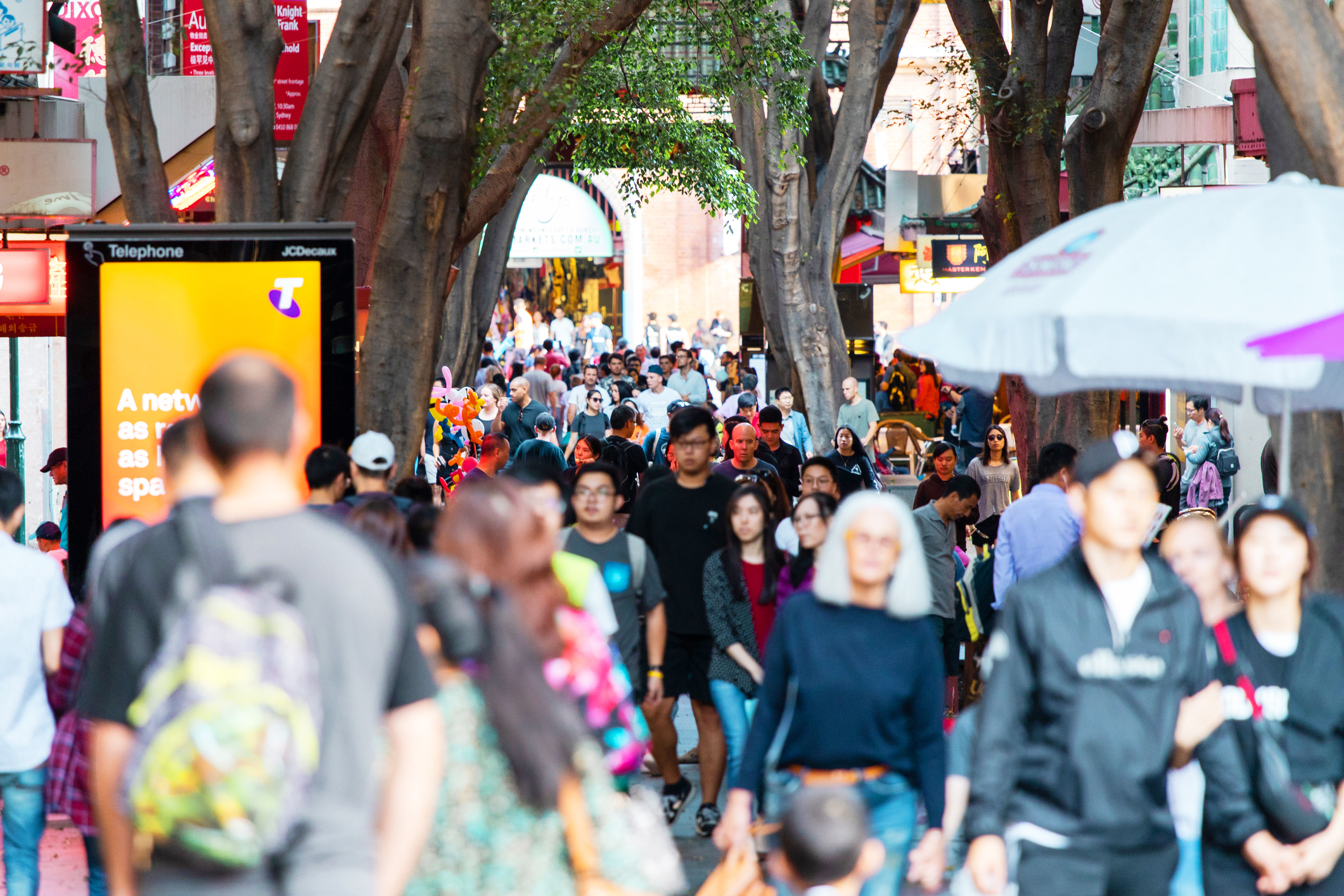Features > Property News & Insights > Housing Trends
Government's Bid to Curb Migration: Will it Solve the Housing Crisis?

KEY POINTS
- The government is looking to bring net overseas migration down from more than 500,000 this year to around 250,000 people
- Analysts say the new number, 250,000 people, is still too high to ease pressure on the already overstretched housing market
- The government is targeting high-skilled overseas workers who will need high-quality rental accommodation or who will enter the market to purchase property in Australia
The Federal government has announced a sweeping overhaul of migration to Australia, releasing a 100-page document detailing steps it will take to bring the number of incoming migrants down.
The move follows calls to lower immigration to more sustainable levels in the face of a national housing crisis, which has seen rents soar and a chronic shortage of homes to accommodate a rapidly growing population.
The government’s response also follows a landmark review of migration which described it as a “broken” system.
The document shows Australia's net migration level probably peaked last financial year at 510,000 on the back of a post-COVID-19 surge in arrivals by international students and temporary workers.
That’s now forecast to fall to 375,000 next year and 250,000 in 2025.
The centrepiece of the government’s response will be making it tougher for foreign students to get a visa to study here, coupled with a crackdown on dodgy education providers who purport to offer training courses, but who, in reality, are providing a back-door pathway for low-skilled workers to enter the country.
Population growth and Australia’s housing crisis
Strong population growth has been one of the factors that has seen home values recover from a post-COVID-19 dip and reach new highs, despite no less than 13 interest hikes in cash rate from the Reserve Bank of Australia since May 2022.
It’s also been a key factor in keeping the Australian economy from falling into a recession.
But analysts question how curbing the flow of international students, in particular, will take the heat out of the housing market, or ease strong demand for rental properties.

Analysis by the Financial Review’s Michael Read in the chart above shows the gap between net overseas migration (which was always predicted to ease from this year’s post-war high point) with and without the government’s promised crackdown on international student visas is actually quite small.
Home Affairs Minister Clare O’Neil has also confirmed that the government aims to get net overseas migration back to the “normal” range, which she says “is about 250,000 people a year.”
However, leading economist Shane Oliver says that number actually needs to shrink to 200,000 or below for a sustained period, if there is to be any prospect of the housing crisis easing.
“Current immigration levels are running well in excess of the ability of the housing industry to supply enough homes, exacerbating an acute housing shortage and poor housing affordability,” the AMP Chief Economist says.
He points to the building industry’s ability to supply about 200,000 dwellings annually, saying the immigration intake would need to be slashed for years to bring supply and demand back into balance.

Ironically at a time when the population has soared with higher immigration, there’s also been a trend towards smaller households.
It started during COVID-19 lockdowns with what social commentators like The Guardian’s Matilda Boseley amusingly dubbed "the breaking up with your boyfriend” effect.
Martin Parkinson, a former senior public servant who wrote the report that prompted the government’s migration changes, says smaller households are now a serious phenomenon.
“The Reserve Bank has been very clear about this…household formation changed, so the number of people in a dwelling fell. We're not producing as many dwellings, but it's also the fact that we've changed the way in which we're using dwellings. So that's partly what's causing the pressure on the housing sector”, he says.

“Brilliant” people need somewhere decent to live
The government’s migration changes are aimed at shifting away from large numbers of low-skilled workers and students.
As part of those changes, it’s promising business a system that would see visa approvals granted in just a week to bring highly skilled overseas staff to Australia.
People eligible for this scheme would have to be paid a minimum annual salary of $135,000.
“We want scientists and doctors and brilliant people, cybersecurity specialists, to come here”, Home Affairs Minister Clare O’Neill told the ABC.
But, she points out, “With those really high-skilled people, we are competing with every other country in the world.”
“We're in a global race for talent and we're not going to win it unless we do basic things like give people fast answers on their applications.”
Analysts say skilled and well-paid overseas workers will be seeking high-quality rental accommodation - not student-style share houses - possibly even subsidised by the businesses bringing them to Australia.
This is likely to keep price pressure up in an already tight rental market, particularly for higher-quality properties.
Many of these higher-income workers are also likely to have substantial savings and will be looking to buy homes on arrival, helping to maintain demand in the residential property market.
Stay Up to Date
with the Latest Australian Property News, Insights & Education.




.png?width=292&height=292&name=Copy%20Link%20(1).png)
 SIGN UP FOR FREE NEWSLETTER
SIGN UP FOR FREE NEWSLETTER








.jpg?width=1920&height=1080&name=Warning%2c%20You%20Might%20Be%20Facing%20Higher%20Taxes%20Soon%20(1).jpg)





.png?width=1920&height=1080&name=Rate%20Drops%20Signal%20BIGGEST%20Property%20Boom%20in%20DECADES%20(1).png)

.jpg?width=1920&height=1080&name=Labor%20vs%20Liberal%20These%20Housing%20Policies%20Could%20Change%20the%20Property%20Market%20Forever%20(1).jpg)
.jpg?width=1920&height=1080&name=QLD%20Slashes%20Stamp%20Duty%20Big%20News%20for%20Investors%20%26%20Home%20Buyers%20(1).jpg)
.jpg?width=1920&height=1080&name=Trump%20Just%20Slapped%20Tariffs%20%E2%80%93%20Here%E2%80%99s%20What%20It%20Means%20for%20Australia%20(1).jpg)
.jpg?width=1920&height=1080&name=Federal%20Budget%202025%20More%20Debt%2c%20No%20Housing%20%E2%80%93%20Here%E2%80%99s%20What%20You%20Need%20to%20Know%20(1).jpg)
.jpg?width=1920&height=1080&name=Australias%20Housing%20Crisis%20is%20about%20to%20get%20MUCH%20Worse%20(New%20Data%20Warns).jpg)
%20(1).jpg?width=1920&height=1080&name=Australias%20RENTAL%20CRISIS%20Hits%20ROCK%20BOTTOM!%20(2025%20Update)%20(1).jpg)
%20(1).png?width=1920&height=1080&name=Is%20Adelaide%20Still%20a%20Good%20Property%20Investment%20(2025%20UPDATE)%20(1).png)
.jpg?width=1920&height=1080&name=RBA%20Shocks%20with%20Rate%20Cuts!%20What%E2%80%99s%20Next%20for%20Property%20Investors%20(1).jpg)
%20(1).jpg?width=1920&height=1080&name=I%20Predict%20The%20Feb%20Rate%20Cut%20(My%20Price%20Growth%20Prediction)%20(1).jpg)
.png?width=1920&height=1080&name=Why%20Property%20Prices%20Will%20Rise%20in%202025%20Market%20Predictions%20(1).png)
.jpg?width=1920&height=1080&name=Why%20Investors%20Are%20Choosing%20Apartments%20Over%20Houses%202%20(1).jpg)
.jpg?width=1920&height=1080&name=Why%20Rate%20Cuts%20Will%20Trigger%20A%20Property%20Boom%20(1).jpg)
.jpg?width=1920&height=1080&name=Retire%20On%202Million%20With%20One%20Property%20(Using%20SMSF).jpg)
.jpg?width=1920&height=1080&name=4%20Reasons%20Why%20You%20Should%20Invest%20in%20Melbourne%20Now%20(1).jpg)
%20(1).jpg?width=1920&height=1080&name=Old%20Property%20vs%20New%20Property%20(Facts%20and%20Figures%20Revealed)%20(1).jpg)
%20(1).jpg?width=1920&height=1080&name=Will%20The%20New%20QLD%20Govt%20Create%20a%20Property%20Boom%20or%20Bust%20(My%20Prediction)%20(1).jpg)
%20Scott%20Kuru%20(1).jpg?width=1920&height=1080&name=Inflation%20Hits%20Three-Year%20Low%20(Will%20RBA%20Cut%20Rates%20Soon)%20Scott%20Kuru%20(1).jpg)
.jpg?width=1920&height=1080&name=How%20to%20Buy%20Investment%20Property%20Through%20SMSF_%20The%20Ultimate%20Guide%20(1).jpg)
.jpg?width=1920&height=1080&name=Victoria%20Slashes%20Stamp%20Duty%20Melbourne%20Set%20to%20Boom%20Scott%20Kuru%20(1).jpg)
.png?width=1571&height=861&name=Are%20Foreign%20Buyers%20Really%20Driving%20Up%20Australian%20Property%20Prices%20(1).png)
.jpg?width=1920&height=1080&name=The%20Single%20Factor%20That%20Predicts%20Property%20Growth%20Regions%20(1).jpg)
%20Scott%20Kuru%20(1).jpg?width=1920&height=1080&name=My%20Prediction%20On%20Rates%20%26%20Negative%20Gearing%20(Market%20Crash)%20Scott%20Kuru%20(1).jpg)

-1.png?width=1920&height=1080&name=Major%20Banks%20Cut%20Rates%20Will%20RBA%20Follow%20Suit%20(Sept%20Rate%20Update)-1.png)
%20Scott%20Kuru-1.png?width=1920&height=1080&name=Rate%20Cut%20Coming%20What%20New%20Zealands%20Move%20Means%20for%20Australia%20(Sept%20Prediction)%20Scott%20Kuru-1.png)
%20(1).jpg?width=1920&height=1080&name=Buy%20when%20the%20interest%20rates%20are%20high!%20(Why%20you%20must%20buy%20now!)%20(1).jpg)
.jpg?width=1920&height=1080&name=Carms_Revised%20Taxes%20Due%20Aug%209%20YT%20Thumbnail02%20(1).jpg)
.jpg?width=1920&height=1080&name=Carms_Too%20Little%20Too%20Late%20Aug%207%20YT%20Thumbnail01%20(1).jpg)









.jpg?width=1920&height=1080&name=Carms_Rate%20Drop%20In%20July%20Jun%2010%20YT%20Thumbnail02%20(1).jpg)
.jpg?width=1920&height=1080&name=Carms_Own%20a%20Property%20V6%20Jun%205_YT%20Thumbnail%20(1).jpg)









.png?width=1920&height=1080&name=Artboard%201%20(3).png)






.jpg?width=1920&height=1080&name=YT%20thumbnail%20%20(1).jpg)

